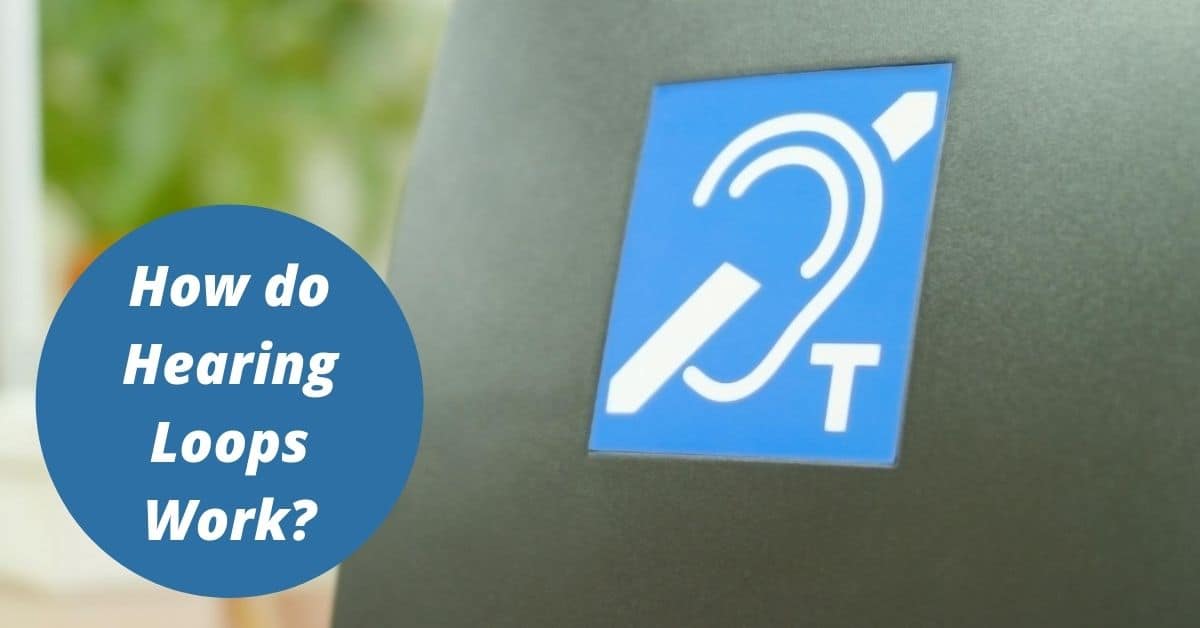
Are you ready to invest in hearing aids? Along with programs and features like background noise reduction and speech enhancement, you’ll probably hear a lot about hearing loops. So what exactly are hearing loops, and how do they work?
What Is A Hearing Loop?
A hearing loop, sometimes called an induction loop, is a type of sound system that can help people with hearing aids hear clearly. Hearing loops are often installed in large auditoriums, concert halls, theatres, public transit centers, and churches. Hearing loops can help hearing aid wearers hear exactly what’s being said on stage, or hear announcements about bus departure times.
How Do Hearing Loops Work?
Public places with hearing loops can help you hear the sounds you’re straining to hear. The hearing loop emits a wireless signal, broadcasting the sound signals from the PA system throughout the venue. By connecting to the hearing loop, you can hear what’s being said even if you’re far away from a speaker.
To access the hearing loop, hearing aids have T-coils, or telecoils. These are small copper wires in the hearing aids that can pick up on the wireless hearing loop signals. When you enable the T-coil setting on your devices, you will hear the audio directly in your ears! You won’t need to strain to hear the sounds from on stage, try to sit near one of the speakers, or ask the person sitting next to you to repeat something. You’ll easily hear exactly what’s being said.
Do Hearing Loops Really Work?
Hearing loops can change the way you attend events, use public transit, or enjoy religious services. With hearing loop technology, you can enjoy concerts, lectures, and performances in a whole new way. When you hear sounds directly in your ears, you won’t be distracted by other people in the audience, or have a hard time hearing sounds coming from across the auditorium. Hearing loops can also make it easy to take public transit. You won’t need to check the board every five minutes to see if something has changed. When you turn on the T-coil setting of your devices, you’ll hear all the PA announcements clearly.
Hearing Aids With T-coils
Not all hearing aids have T-coils. As you shop for your new hearing aids, think about the places where you struggle to hear. Do you attend regular church services? Do you enjoy going to large events but have a hard time hearing what’s happening on stage? If you regularly find yourself needing extra help hearing in these settings, you should consider investing in hearing aids with T-coils.
Many modern hearing aids have built-in T-coil programs and settings. T-coils can be included in most styles of hearing aids, so when you’re selecting your new devices, ask for a T-coil to be added.
How To Use A Hearing Loop
Do you have a hearing aid with a T-coil? Using a hearing loop is simple. Find out if the venue you’re visiting has a hearing loop, and ask them if the hearing loop is fully functional. When you arrive at the venue, you’ll need to turn on the T-coil setting on your devices. This program doesn’t turn on automatically, so be sure you manually activate the program. As soon as you turn on the program, you’ll be connected to the sound system through the hearing loop. You can enjoy extra volume, personal control over the volume, and added sound clarity. You’ll also notice a reduction in background noise, and be able to hear exactly what’s being said on stage.
If you switch to your T-coil setting, and all you hear is an uncomfortable hissing sound, there is no hearing loop at the venue, it hasn’t been turned on, or it’s not working properly.
Ask About Hearing Loops
Hearing loops are becoming more common in auditoriums and venues across the country. If you’re planning to attend an event at a venue that should have a hearing loop, call ahead and ask about hearing loops. You can even visit the venue ahead of time to test the hearing loop, and make sure the staff know how to turn on the hearing loop. Not only will this ensure that you’ll have a great experience, you’ll also be advocating for other hearing aid wearers, and make hearing loops the norm in all public spaces.
Have questions? We’re here to help. Contact us today to learn more.
